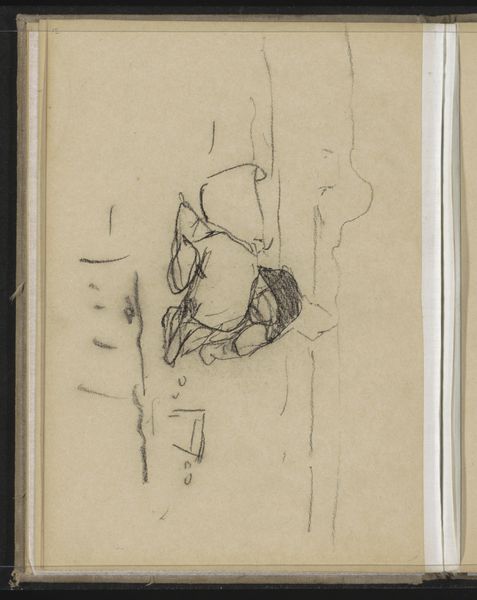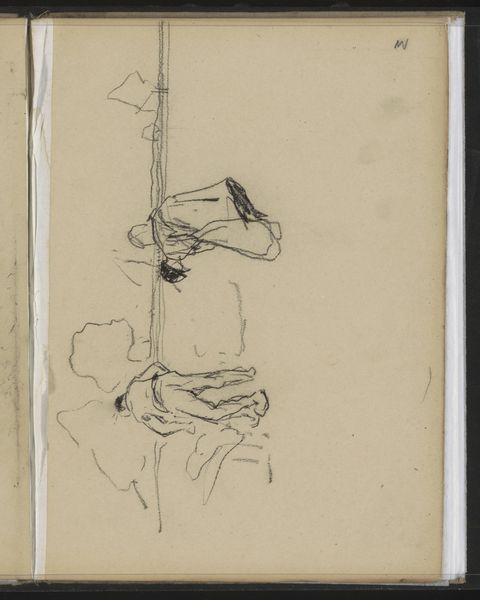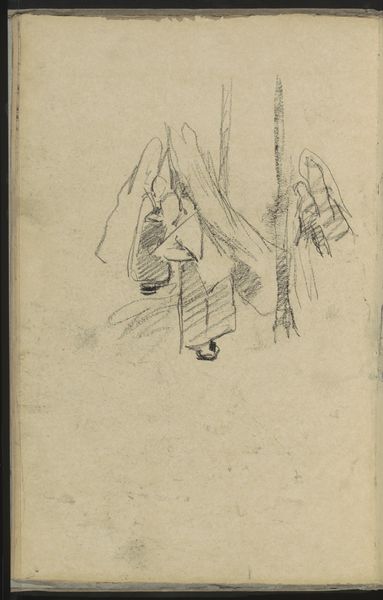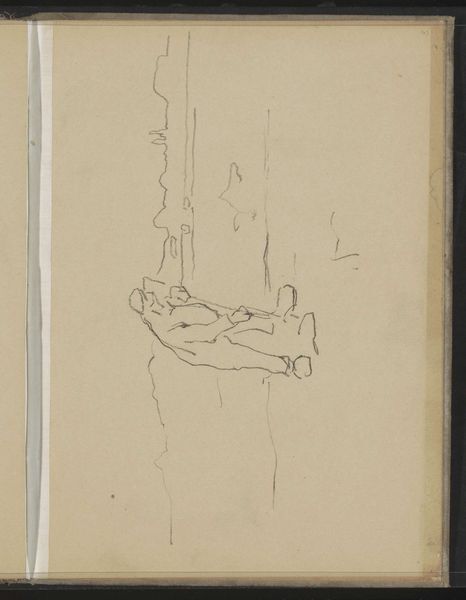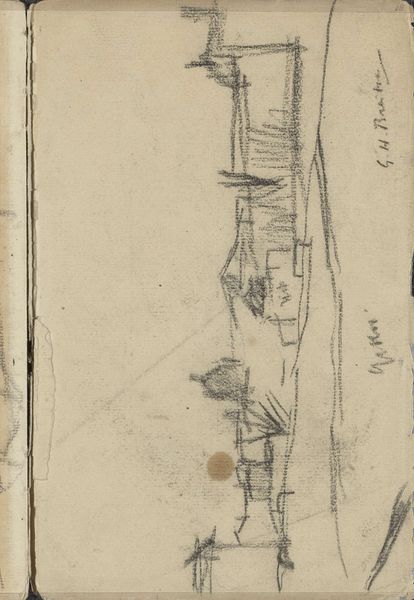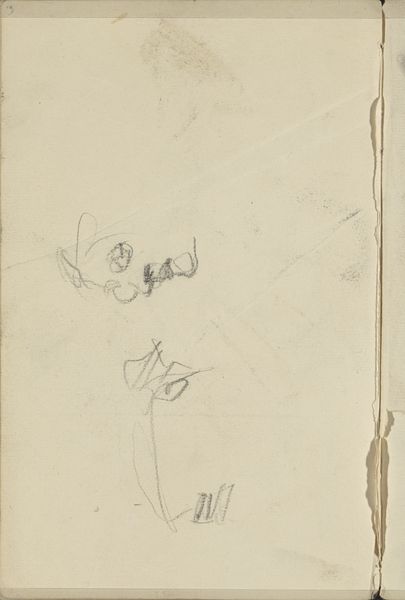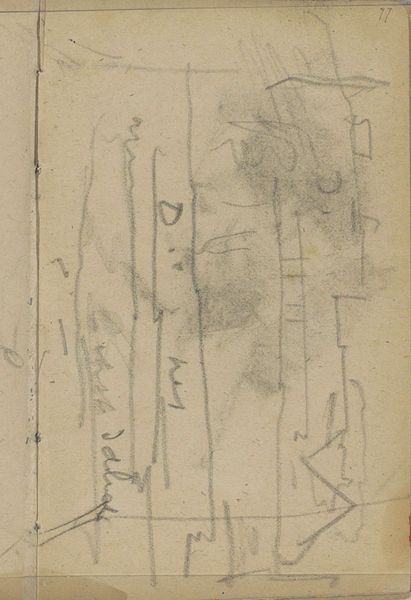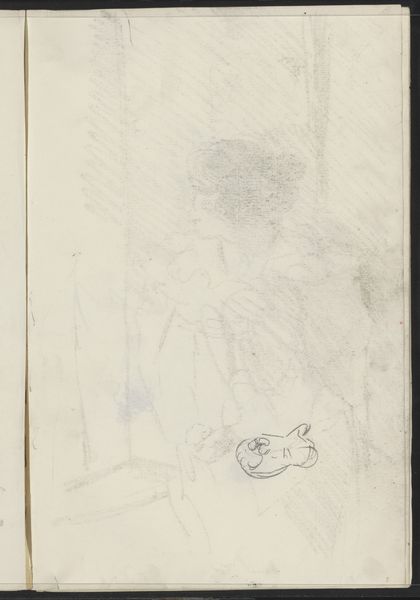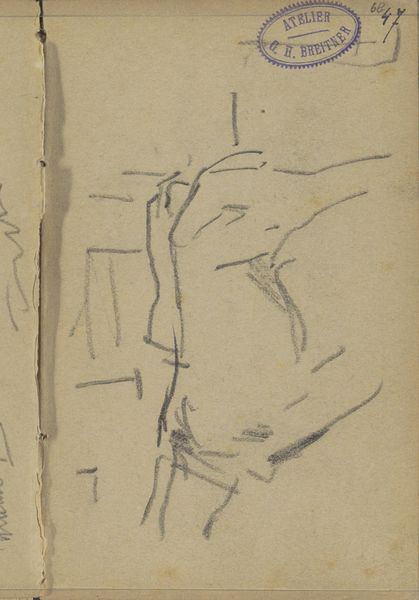
Copyright: Rijks Museum: Open Domain
Curator: Before us is "Figuren aan het werk op het land," or "Figures Working in the Land," a pencil drawing made between 1893 and 1897 by Willem Witsen, now housed in the Rijksmuseum. Editor: My first thought is how fragile the moment feels. The figures seem caught in a fleeting glimpse. The sketchiness, that hazy pencil work, suggests a quiet transience, a moment on the land more about feeling than sharp detail. Curator: Exactly. Witsen, working within an Impressionistic framework, captured the Dutch landscape and its inhabitants during a period of rapid urbanization and social change. This drawing isn't just about depicting labor; it's about portraying a way of life, the dignity and struggle connected to the land in Dutch society. The landscape becoming ever-threatened at the turn of the century, both by modernization but also the increase in industry in the rural areas. Editor: Absolutely, and it is interesting to see the materials he used, how appropriate, right? Using pencil is a simple way of capturing figures. It shows that access to materials allowed people to do this type of work with efficiency but perhaps in that efficiency some details were lost and left up to interpretation. Also, the roughness of the line mimics, perhaps even mimics, the roughness of manual labor, I'd say. Curator: That's a powerful reading, how the choice of material, in itself, is communicating about manual labor. Also notice the negative space, around the pencil drawings; a kind of emptiness or uncertain space, it adds to the mood of things being very momentary, things being very fleeting. Editor: Fleeting in material as well, even. We do not know about conservation and treatment for this drawing on paper, but we also know the impermanence of paper, in itself. And maybe even Witsen did. The historical record of an action; a moment recorded through art in all it's potential decay is amazing. Curator: Yes. So as we reflect on Witsen's piece, we can observe it as both a simple drawing of workers in a field and also see it as a meditation on the evolving role of the land and labor in late 19th-century Dutch culture. Editor: A social record made visible through unassuming materials. One is struck not only by the fragility of the rendering, but its preservation!
Comments
No comments
Be the first to comment and join the conversation on the ultimate creative platform.
